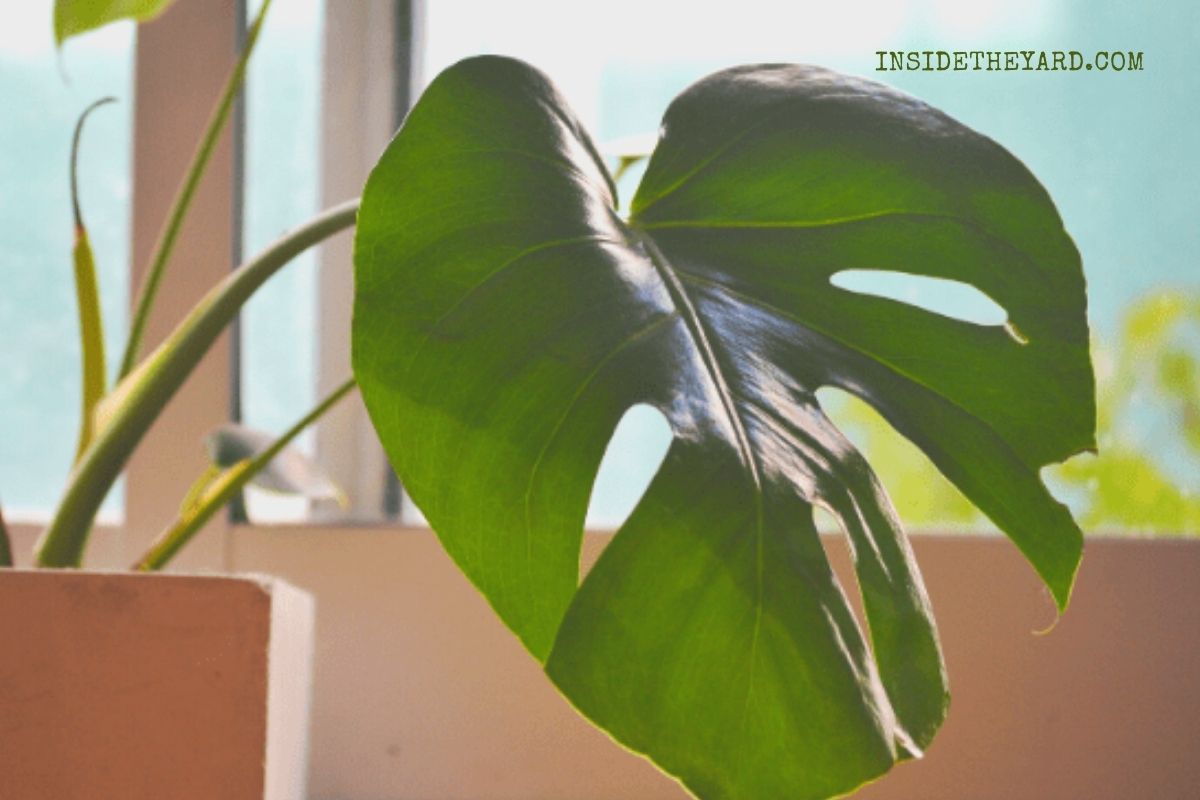
‘Why is my Monstera drooping after repotting? Wilting of the plant may happen due to a sudden shock of repotting. When you transfer the plant, it may not handle the transplant stress. That could be the possible reason for your Monstera to droop.
But that is not the only reason. Your Monstera plant can be drooping because of overwatering, underwatering, pests, insufficient sunlight, root rot, or just the transplant shock.
Let’s find out what caused your Swiss Cheese Plant to droop.
Monstera Drooping After Repotting: Causes And Symptoms
There could be several reasons for your Monstera plant drooping. Let’s have a quick look at why it is drooping.
| Possible Reason For Drooping | Solution |
| 1. Got a transplant shock | Watch carefully for two weeks after repotting. Give enough sunlight and water, and support if required. |
| 2. Damage from heat or cold. | Place your Monstera plant pot in front of a window where it does not get direct sunlight but has a view of the sky. That way, it would be saved from cold and heat. |
| 3. Underwatering | Properly irrigate the plant on a regular basis. |
| 4. Overwatering | Replace the wet soil with some dry substitute. Only water your Monstera when the soil is dry. |
Transplant Shock Can Be the Crucial Point
Houseplants like Monstera Adansonii grow fast when they are in a healthy state. So, you need to report it from a smaller pot to a larger one.
When you repot the plant, it may get shocked by a sudden movement from its comfort zone. So, Monstera wilting after repotting is common in this situation.
The repotted plant is in shock, and the wrong handling of the plant may have caused it. Also, consider the growth rate of your Monstera Adensanii.
In general, this pot plant needs repotting every 2 to 3 years. But if you keep a fast-growing plant in a small pot for too long, its roots may get damaged when you transfer it or loosen up the roots before repotting. Frequent repotting can also diminish the plant’s stamina and make it droop.
Damage From Heat Or Cold Can Impact
The typical temperature for these tropical plants is between 18 to 30 degrees celsius. You may think the plant needs sunlight after repotting and keep it directly under the sun or around a heating source.
Excess heat can burn the plant leaves and make the plant wilt. Again, too much cold can be another cause for the plant to droop. Due to excessively cold temperatures, the Monstera leaves may turn greyish.
Underwatering The Plants Is Alarming
When you transfer the plant into a bigger container, it faces a vulnerable situation due to sudden shock. Besides that, if you do not water the plant, it may lose its strength to hold up anymore.
In addition to that, the leaf may also turn pale. So, underwatering might be the reason for your Monstera Deliciosa drooping after repotting.
Maybe You Practised Overwatering
‘Why is my Monstera drooping and turning yellow?’ Overwatering is another possible reason for your Monstera plant to droop. The top two inches of the pot should be dry.
You must not water the plant if the topsoil is damp. Overwatering can cause the Monstera leaves to droop, the root to rot, and eventually lead the plant to death.
Early signs of overwatering are yellow or brownish leaves, wilting stems, dried leaf tips, etc. You can smell a rotting smell from the pot if the roots are decaying. This can also happen due to lack of drainage or if the bottom plate is often filled with drained water.
Larger Pot Can Become the Root Cause
You may want your Monstera plant to grow fast and big. And for this reason, you may have transferred it to a larger pot which is too big. The big pot holds excess moisture in the soil, leading to root rot.
The problem may not be seen from above since the water is drained through the soil. But the middle layer of the soil absorbs the water and does not dry up as fast as the top layer. This can be the reason for your Monstera leaves drooping.
Check There Is Dry Soil
Dry soil is another common reason for your Monstera Deliciosa plant to droop. Check the soil with your finger pushing through the soil.
The plant lacks water if the soil is dry after the top 2 inches. The Monstera plant originates in the tropical forests of Central America and the South of Mexico. They grow in a humid environment. So, the dry, rough soil is definitely not a suitable soil condition for them.
The plant must not be left dry after you transplant it. If you do so, the plant will wilt due to the lack of moisture components. This may also happen if you plant it in a pot of dry soil.
Stop Over Fertilizing
If you over-fertilize the plant to grow it faster, it can turn out to be a wrong decision. Sometimes excessive nutrition makes the situation worse and can cause the plant to spoil. You will notice fertilizing salt build up on the soil surface if you have given more than the plant requires.
This Video Will Help You Too!
Frequently Asked Questions (FAQs)
How do you revive a wilted Monstera?
You have to water a wilted Monstera plant that is deprived of water gradually, a little at a time. Or you can dip the pot in a basin full of water for about twenty minutes to let the plant sip water through its roots.
How long does it take for a Monstera to perk up?
When you replant your Monstera plant in a new pot, it can take more or less a week to perk up.
Should I water Monstera after repotting?
You definitely should water the Monstera right after repotting. Since the plant is in a shocking condition, it requires water and nutrition to perk up again.
Do New Monstera leaves droop?
It is not normal for a new Monstera leaf to droop. One possible reason your new Monstera leaves to wilt is lack of water.
Conclusion
If you find your Monstera drooping after repotting, a possible reason is the transplant shock. So, give some time and proper care to the plant to replenish.
If it is still drooping after a week or so, consider looking at the watering schedule. Overwatering or underwatering can be the reason. Check on the soil and temperature to find out the possible reason for your Monstera Adansonii wilting after repotting and adequate steps to replenish it back to healthy growth.
